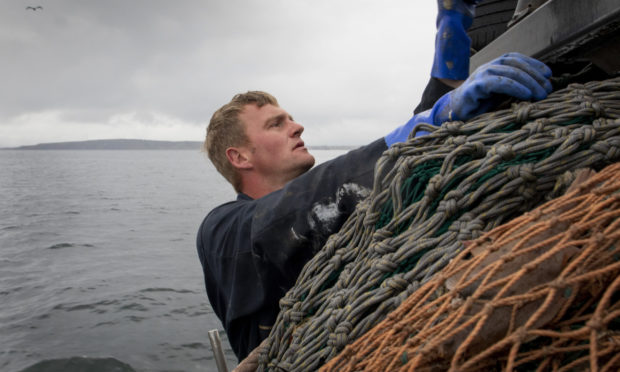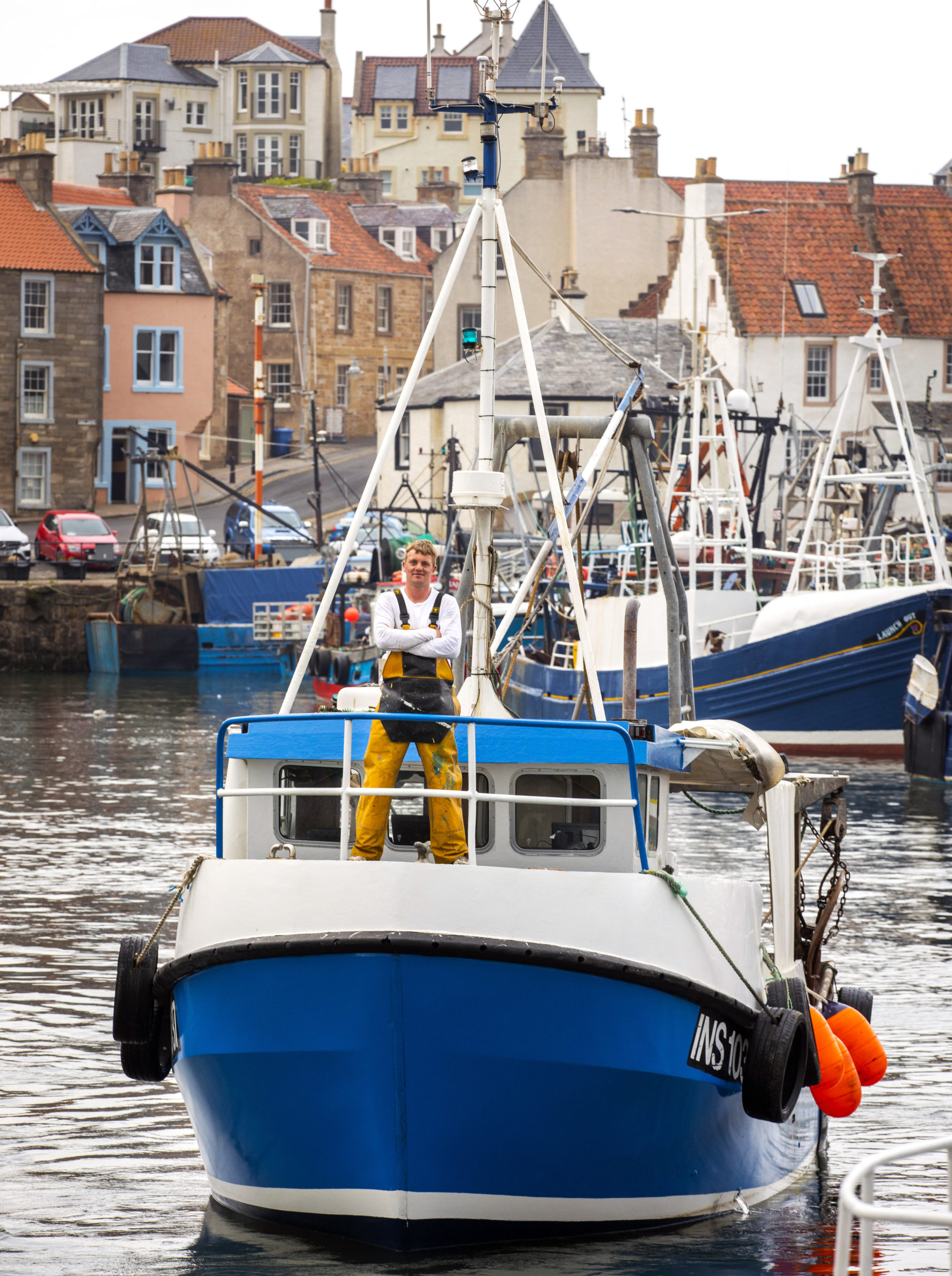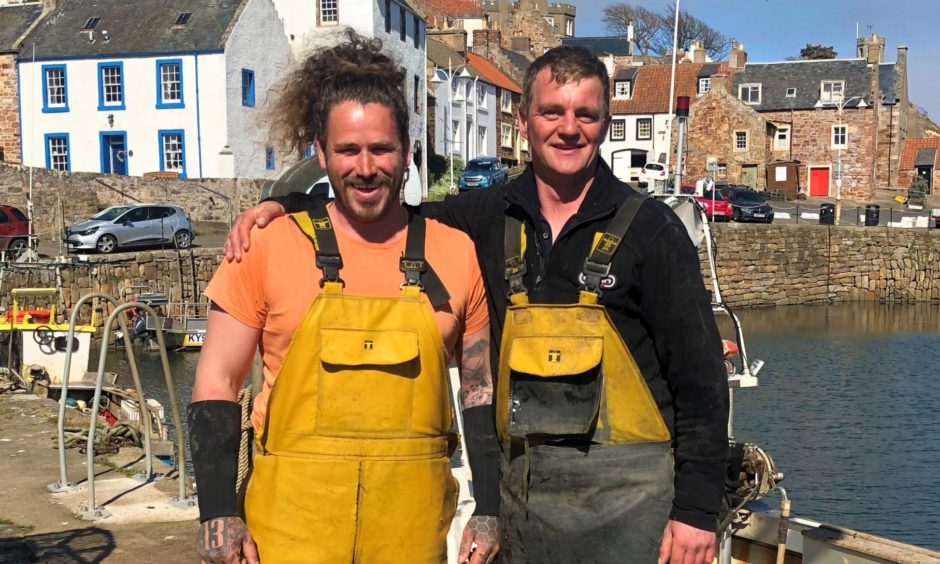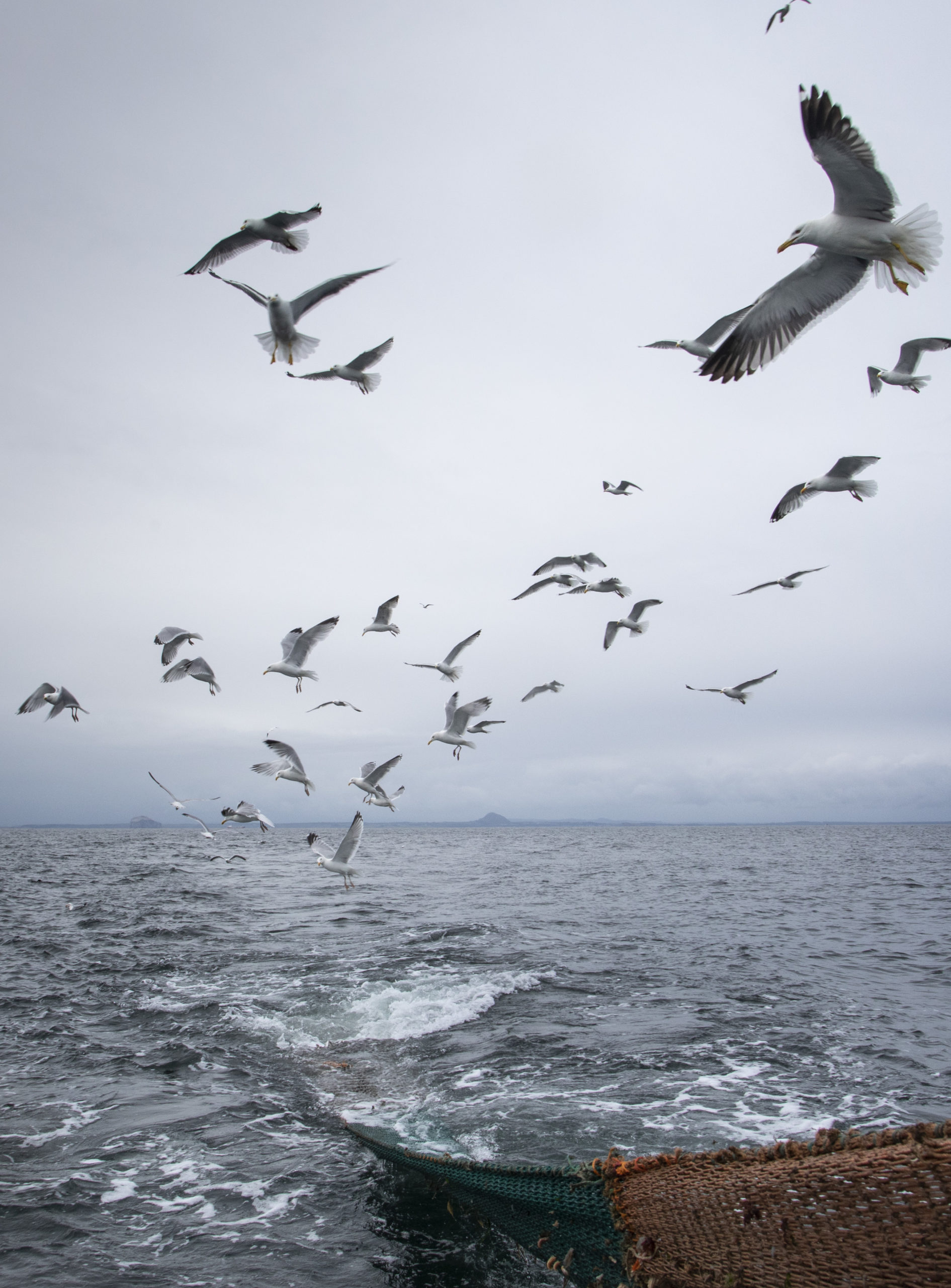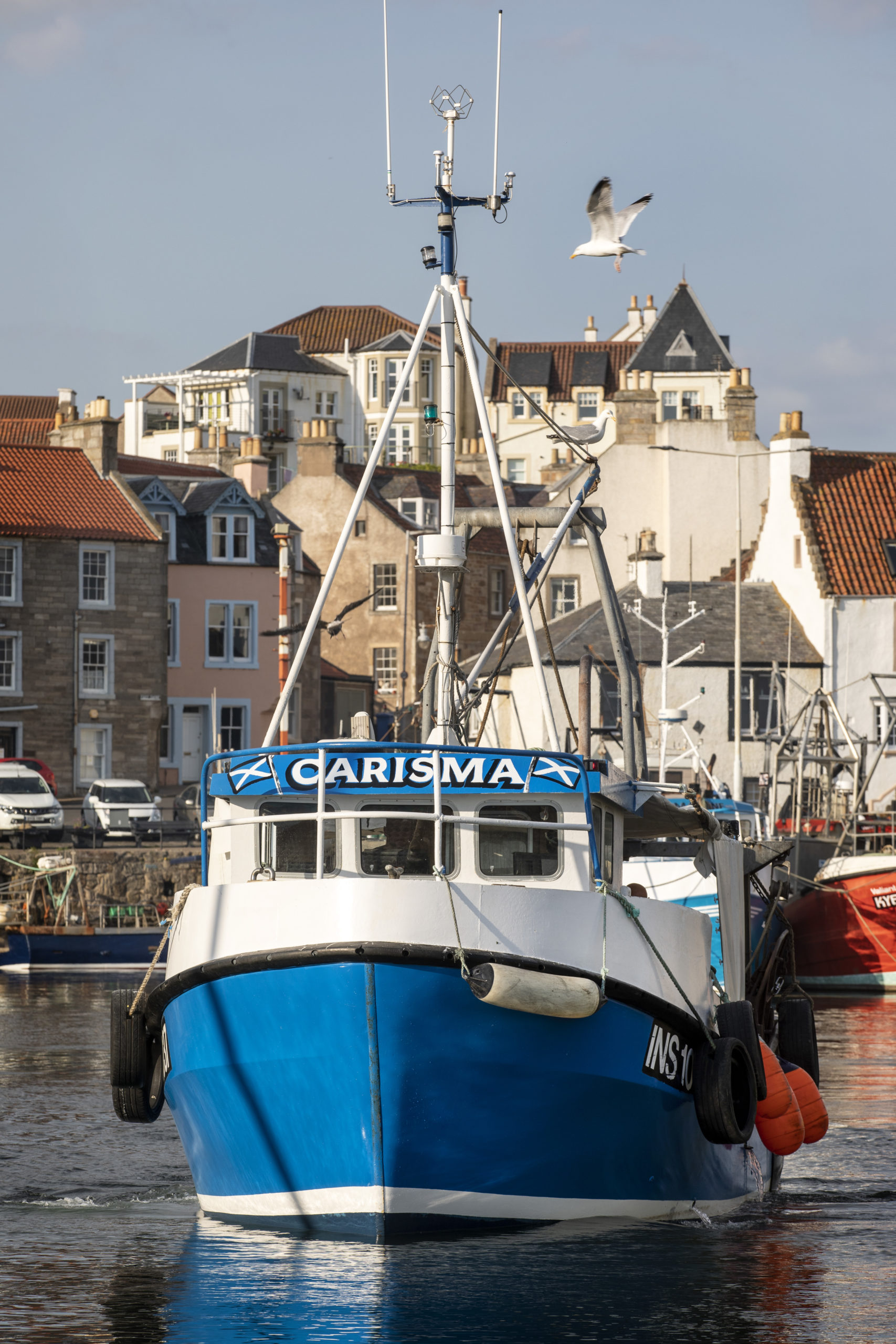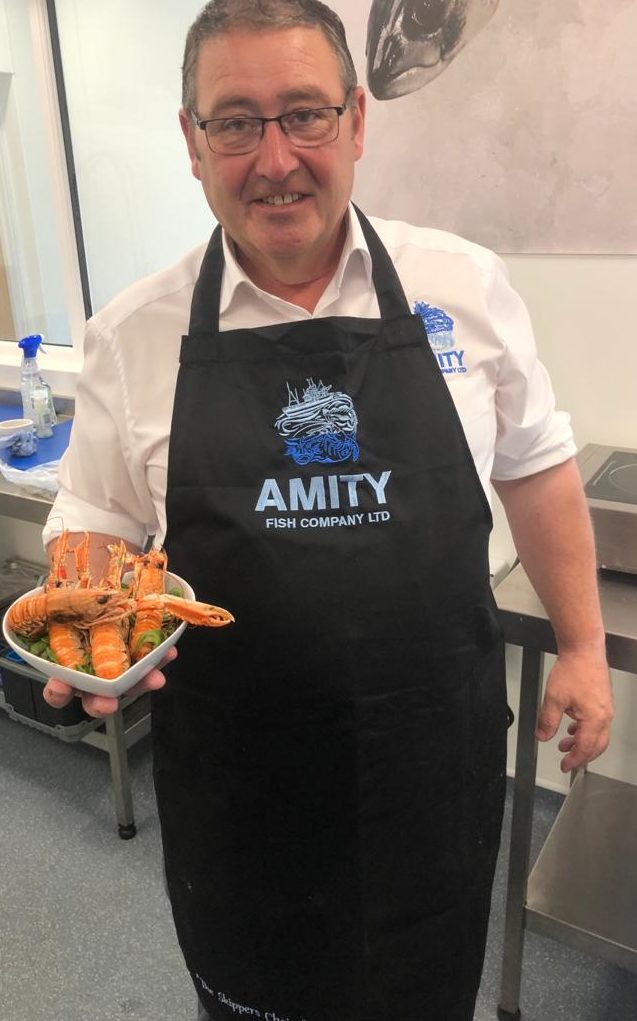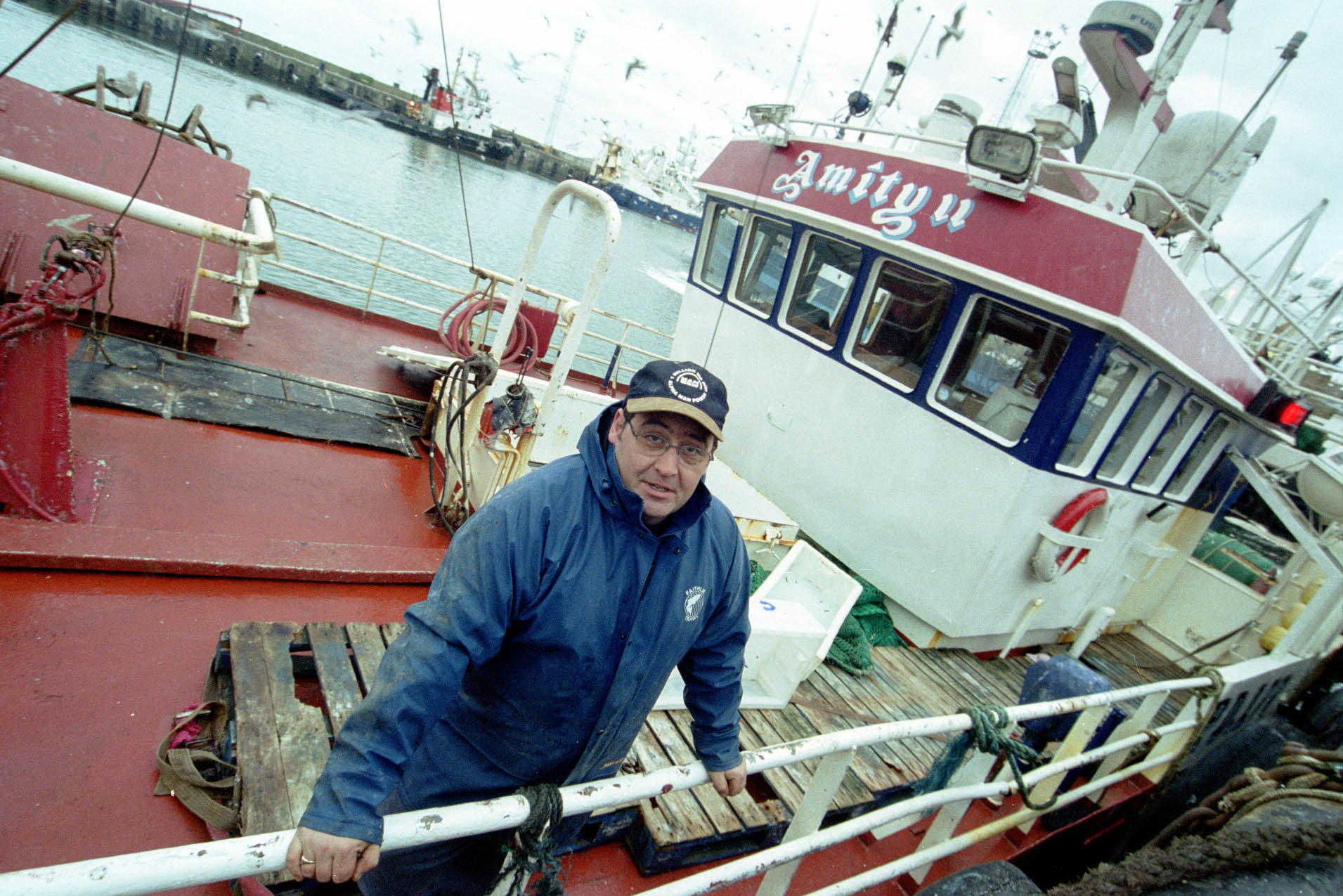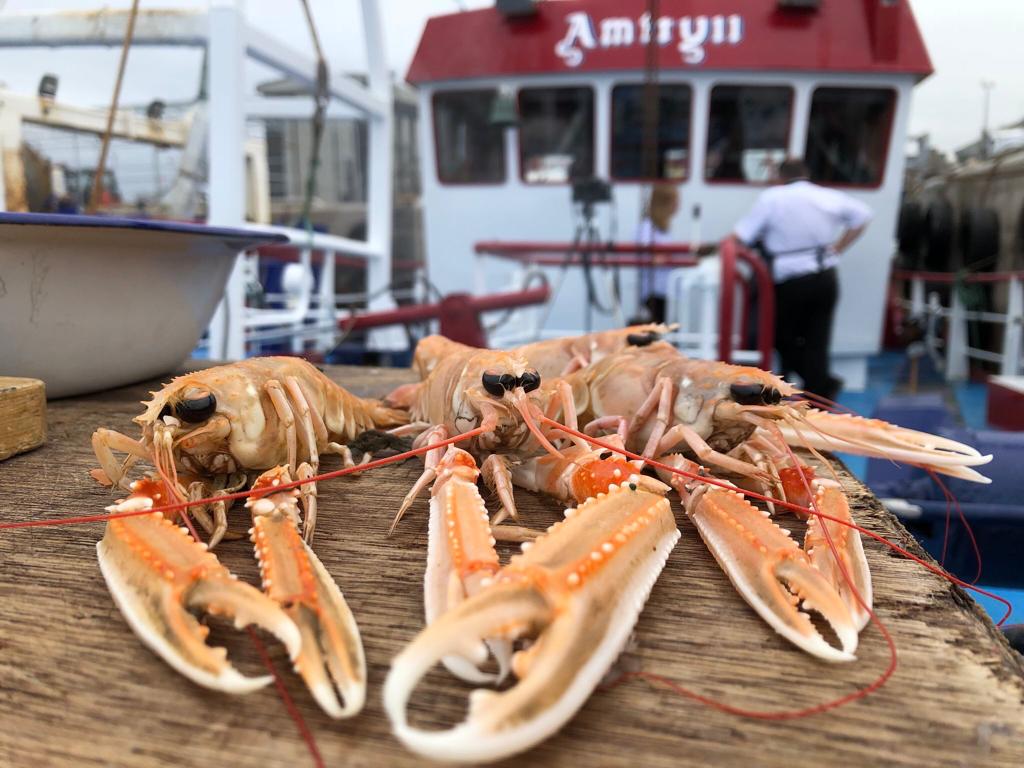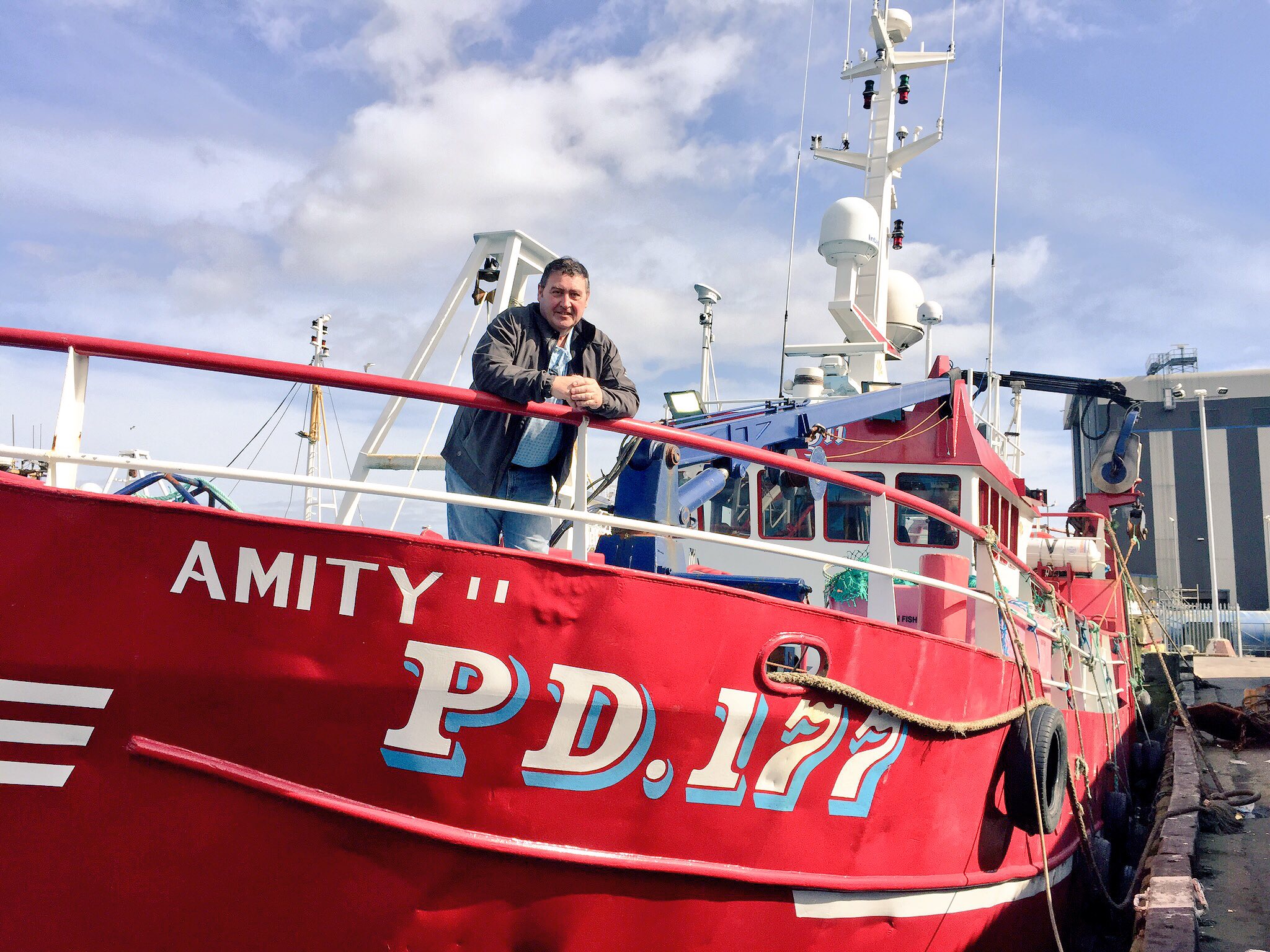Langoustines, also known as nephrops, have long been one of Scotland’s most valuable catches. Here Julia Bryce finds out what happens to a sector reliant on European markets and how businesses are diversifying to make it work.
Scotland is a global leader when it comes to catching and producing top quality seafood.
Famed for our outstanding larder, the North Sea and east and west coasts are buoyant with fish and shellfish, with hundreds of boats venturing out into the big blue to wrangle their catch.
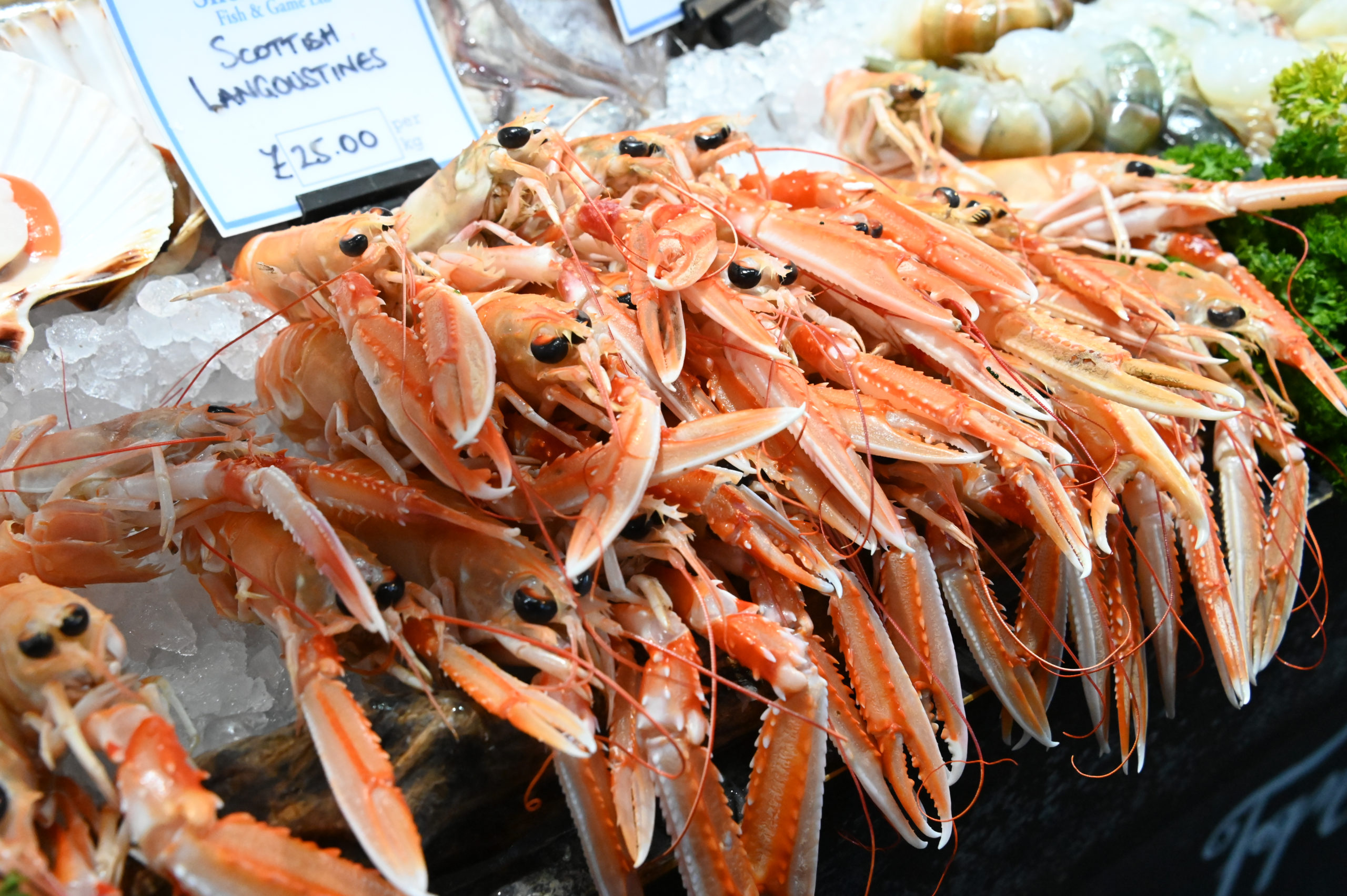
One of the most important catches in Scotland, langoustines – also known globally as scampi, Dublin Bay prawns, and Norway lobster – are prized across the world and one third of the world’s landings is done so on our shores.
Fraserburgh Harbour is the biggest shellfish port in Europe and is home to many of the biggest langoustine-catching boats.
Sticking to quotas
Subject to quotas, like all other commercially-caught fish, catches are managed by the European Union Common Fisheries Policy and langoustine catches are controlled all subject to Total Allowable Catch regulations or national quotas.
More than 38,000 tonnes’ worth (around £80 million) are landed into Scottish ports in the north-east, Moray Firth and west coast.
Mike Park, chief executive of The Scottish White Fish Producers, the largest fishing association in Europe, explains what the langoustine market looks like, and how detrimental the coronavirus pandemic has been to the industry.
He said: “There’s 175 nephrops vessels in Scotland. There’s 35 between 12 and 15 metres, 133 between 15 and 24 metres and seven over 24 metres.
“The quota allocated to Scotland in the North Sea is 13,100 tonne in 2020, of which we have caught 3,159 tonne. That’s lower than normal because of Covid-19 and the fleet being tied up. In the west of Scotland the quota allocated is 10,926 tonne, of which 1,730 tonne had been landed. That’s an indication on how low we are on landings in comparison to where we would traditionally be at this time of year.
“We’re finding some of the markets across the continent are opening up and some of the retail outlets in the UK are starting to open back up, too.”
Back online
While the industry has certainly taken a hit this year, Mike says that more and more of the sector is now reopening, but is cautious as stock levels of frozen langoustine are already strong, meaning vessels have turned to catching other fish, too.
He added: “Some of the larger prawn factories are now coming back online which will help the catching sector. Having said that, there is a lot of produce lying in cold stores frozen from a strong fishery last year. These companies will be looking to reduce those stocks before starting to entertain the supply chain in supplying a normal amount of nephrons. The scallop sector has been challenged, too. Hopefully we can get back to what it was.
“A number of vessels have diversified and have looked at catching other things during the period. Summer is still langoustines, but they will just be taking in lower levels. They are trying to supplement those income levels with other things like plaice and lemon sole. We also have a big squid fishery in the north-east of Scotland that has opened up and there’s a number of vessels out catching it.
“There’s a limited amount of requests for fresh live product and those serving customers looking for frozen down, so I think it’s them just trying to figure out what is best.
“The fishing business is like every other business. Companies are focusing on securing and building their business just now and they are slowly building it back up.”
When one door closes… another opens
Experienced fisherman Kirk Doig launched his fresh langoustine firm Carisma Seafood during lockdown, largely in response to the European markets drying up during the coronavirus pandemic.
Based in Pittenweem, Kirk has been fishing and delivering fresh langoustines across the east coast of Fife, ensuring people from Dundee, Perth, Aberlour and even as far as Edinburgh, can enjoy his freshly-caught fare.
Pittenweem is an active port with nearly 30 boats fishing. While more than half of its local fleet are prawn trawlers, the others specialise in creel.
Claire Doig, Kirk’s aunt, has been working overtime to keep up with the demand. Lending her nephew a hand (who is currently at sea), Claire said they have been overwhelmed with the amount of orders and support.
She said: “It’s going really well. We’ve managed to keep our deliveries up every week. We started off local and are now much further afield including Dundee, Perth, and Aberfeldy.
Initially, after an article was published in The Courier, we received lots and lots of orders. We didn’t even have a website then and we were doing around 30 deliveries a day as a result. It was constant. Our customers tend to return on a four to six week cycle and we have a lot coming back. Langoustines are a luxury food and a few other boats have started doing it – but there’s plenty for everyone.”
Home truths
With the European market disappearing overnight, Kirk quickly thought on his feet and decided to look closer to home for support.
“The market for langoustines vanished instantly when Covid-19 hit. The majority of the catch from Pittenweem goes to Europe, so the minute lockdown commenced the market dried up,” said Claire.
“All of the boats tied up and Kirk thought ‘wait a minute, why is all this produce going abroad? Why don’t we eat our own langoustines?’.
“Everyone started sharing the news about him starting to do local deliveries. Graphic design firm Avian in Broughty Ferry did all the branding for him for free and Laura Strong, an art director at the BBC and director of Edinburgh creative agency Great Brink, has got her friends together and made a film of Kirk going out to sea. It has really grown with these people really helping him and supporting him.”
Heading out early evening in search for his daily catch, Kirk, who has 10 years’ experience in the industry, is only ever at home on a Friday and Saturday night. Working with one other on his Kingfisher 26 prawn trawler called Carisma, the pair work constantly through the night to find the langoustines and bring them home.
She added: “Kirk goes out around 5pm and fishes all night, catches the langoustines and the next morning they are landed onto the vans and we get them out to customers straight away. They get them when they aren’t even 24 hours old.
“A lot of prawns on the bigger boats are chemically dipped but we’re really against doing that, they are straight from the boat to your plate. It’s fishing, not farming. Some nights he will go out and not catch as much as he’d like to but our customers have been amazing and just ask for their orders when they are ready. We can only sell what we catch.”
The future
Looking to continue to offer this bespoke, fresh service, Claire says Kirk will do what it takes to make things easier for his customers and will get the best produce he can by using his smaller trawler to get into nooks and crannies other boats cannot get into.
She said: “He’s had his own boat for five years. Fishing is in his history as his granddad was a fisherman and he used to go down and see all the boats when he was a young boy. His boat is smaller so it means he can get into some spaces to fish that other boats can’t.
“We’re hoping this fresh delivery service is what we’ll be doing forever now and we still need to add a shop on the website to make ordering easier.
“But because it is a Fisherman’s Mutual Association (FMA) in Pittenweem he does have to land some product through there, he can’t just take all of this catch for his customers, so sometimes if he doesn’t get out we buy from another boat and do it through the FMA so it is sustainable for everyone. We’re trying to get the freshest produce to our customers as we can.”
From skipper to seafood delivery
Jimmy Buchan, who shot to fame on BBC series Trawlerman in 2006-2010, is a well-known face in the world of fishing in the north-east of Scotland.
With more than 20 years’ experience as a skipper, Jimmy and his team of up to six staff work to ensure the best quality seafood is delivered from the sea to plate via his seafood delivery firm Amity Fish Co. headquartered in Peterhead.
Having fished the North Sea and langoustines for decades, Jimmy is no stranger to the long nippy crustacean.
Living in burrows, they can be found in waters from a few metres to well over 500m deep and usually come out to feed in the evening.
He said: “In the North Sea you’ll mainly find them in soft, muddy, salty water. They are usually caught in the North Sea and the west coast. There’s specific areas around the UK, but primarily in Scottish waters. They live in burrows in the sea bed. A scientist once told me it was one langoustine per burrow, but having fished them for 20 years plus, I think they are cohabiting.”
Angles of attack
“It is you versus mother nature and your hunter instinct. The most prolific times they come out to feed is at daybreak and dawn – the fishing terms are “time of morning” and “time of night” for dusk.
“It can take a lifetime to work out their patterns, where they will be and, for no reason, they can change their minds in an instance. There’s a multitude of variables like tide patterns, light, the weather, seasonality and more and you travel to certain places at different times of the year. There’s serious stakes and running a trawler is not cheap.
“When you’re fishing for nephrops you are dealing with geometry, so angles of attack are absolutely critical. Keeping your nets open so it is fishing at optimum is crucial. The tuning of your gear has to be pitch perfect and you’re in the right place, you’ll do well.
“I think next to mackerel, I think it is the second most valuable to the Scottish fleet.”
European market
With the majority of global langoustine catches done in Scottish waters, the country has cemented itself as one of the best in the world for fresh, high-quality produce.
Not having to do much to it, the product is one which is heavily enjoyed in European and Mediterranean countries.
“I think 70% of the world’s langoustines are caught in Scottish waters, with the bulk being in the North Sea. We’ve built up this export market with Europe over the past 30-40 years, exporting this great seafood,” said Jimmy.
“In Scotland we don’t get the same weather and al fresco dining isn’t as easy, and Europeans are big seafood eaters. Covid-19 has hit everyone, especially the hospitality sector, and with no one sourcing the product, sales have plummeted. It is slowly coming back, but it is difficult and the remainder of 2020 is going to continue to be so.
“I am led to believe by the industry that 80% of producers are back at work. Nothing like what they normally would have been. The price is not so good, and right now is the most prolific time for catching them. We’d normally be harvesting high and processing/freezing the product ready for autumn/winter markets. Because the processes aren’t processing as much, it is having an effect. It has never been more important for local people to be eating our local produce. We are in high season and hopefully we have another six to eight weeks of good fishing.”
Grading system
Marked to ensure they are hitting the correct markets, fishermen will assess their catch on the boat and grade them in time for arriving at shore.
“The fishermen grade their harvest at sea as either small, medium and large. If there’s prawns with both legs missing it will get tailed and they will be sold separately to the domestic market and will be peeled and made into scampi. The breaded scampi in the supermarkets is a result of broken or damaged langoustines. The UK is huge for scampi and whole langoustines are more the continental market.
“After being graded, they are put into 20kg fish boxes onboard and iced. The boats land every two to three days and each has its own processor on contract. They will land their catch with them and the processor will pay the skipper for the weight delivered.
“The langoustine market is different and doesn’t go to market like fish, there’s no bidding on them, like fish, as it goes straight to the processor who gives a fixed price on the weight and grade of the catch. That is then turned around, iced in smaller boxes and sent out to the hospitality sector.
“The boats will land around 3-4am and the produce will be in the factory and processed by 8-10am and sent onto Paris by lunchtime. That’s the speed of the fresh market. Anything not going fresh will be frozen in tunnel freezers for four to six minutes.”
To source his popular scampi, langoustine and langoustine tails (shell on or off), Jimmy works with two top processors and trusted fishermen to bring his customers the freshest produce.
“I work with two processors and I know the vessels they work with so I know exactly where I’m getting my produce. They supply me with what I need for my customers and we know the supply chain journey right through. Traceability is very easy.
“Scampi is one of our best sellers. That has grown by word of mouth and building up great customers. We’re starting to send our products across Scotland now, as well as locally, which is fantastic.
“I can’t compete with supermarkets, but I know I have the best product and want my customers to have a foodie experience with excellent produce. We also work with fish and chip shops and their customers are also loving it, so in my opinion we’re winning the war. Scotland is building up an outstanding seafood industry and we are a global leader when it comes to seafood.”
Dubbed “fast food” by Jimmy, his terminology is based on the fact seafood is quick and easy to cook – something he is passionate about getting more people to do.
“Fish is fast food – you’ll cook it faster than the likes of a burger. I’d encourage people to push the boat out and try new things, especially when they taste so good. This type of seafood is fine dining with your hands. Get your hands in there and really experience it.”
